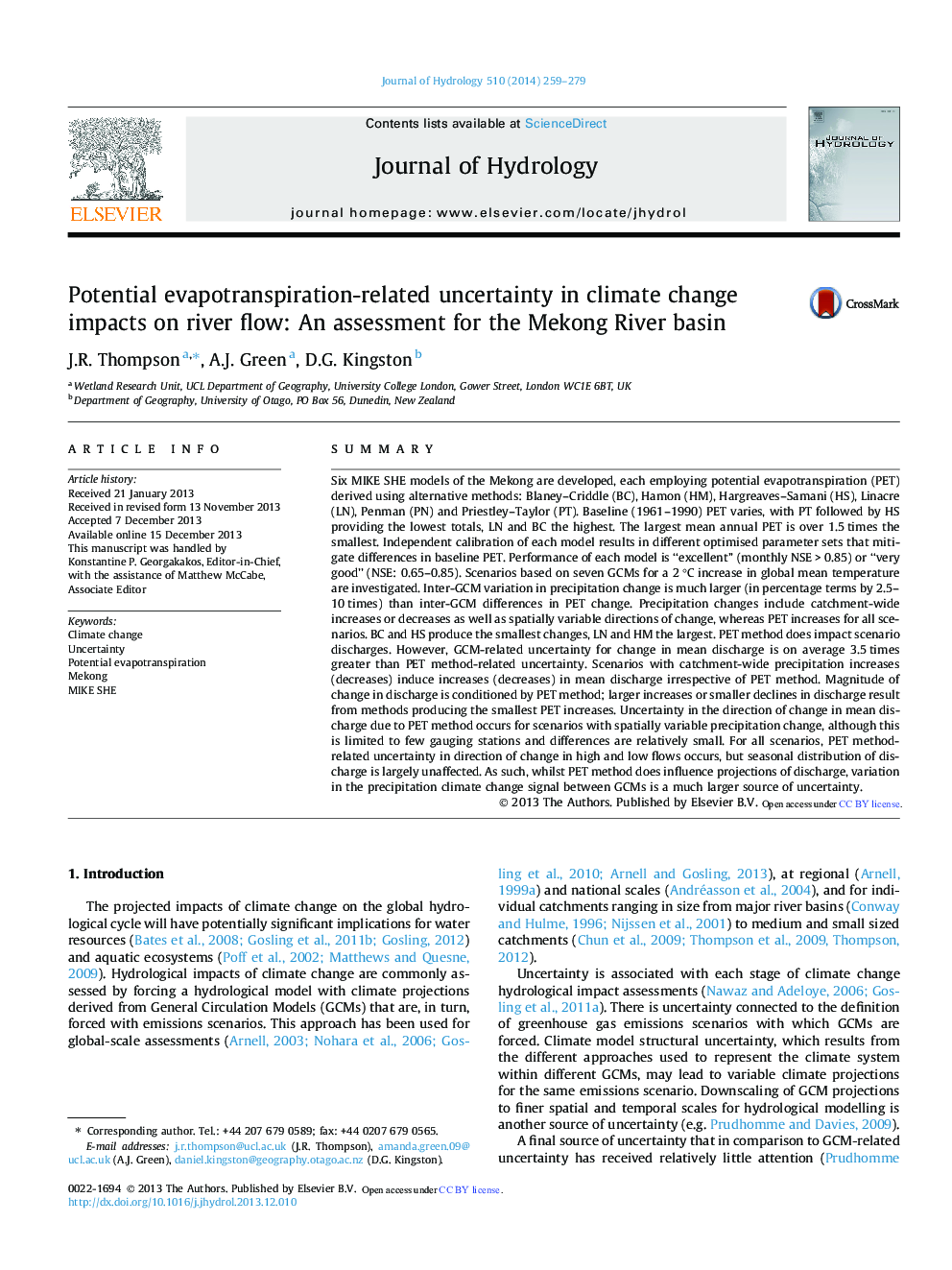| کد مقاله | کد نشریه | سال انتشار | مقاله انگلیسی | نسخه تمام متن |
|---|---|---|---|---|
| 6413201 | 1629938 | 2014 | 21 صفحه PDF | دانلود رایگان |
- Six Mekong models are developed using different potential evapotranspiration (PET).
- Very similar (excellent or very good) baseline results are obtained for each model.
- A 2 °C increase in global mean temperature is simulated using data from seven GCMs.
- Inter-method differences in baseline and scenario PET impact projected discharge.
- Inter-GCM precipitation differences are a larger source of uncertainty than PET.
SummarySix MIKE SHE models of the Mekong are developed, each employing potential evapotranspiration (PET) derived using alternative methods: Blaney-Criddle (BC), Hamon (HM), Hargreaves-Samani (HS), Linacre (LN), Penman (PN) and Priestley-Taylor (PT). Baseline (1961-1990) PET varies, with PT followed by HS providing the lowest totals, LN and BC the highest. The largest mean annual PET is over 1.5 times the smallest. Independent calibration of each model results in different optimised parameter sets that mitigate differences in baseline PET. Performance of each model is “excellent” (monthly NSE > 0.85) or “very good” (NSE: 0.65-0.85). Scenarios based on seven GCMs for a 2 °C increase in global mean temperature are investigated. Inter-GCM variation in precipitation change is much larger (in percentage terms by 2.5-10 times) than inter-GCM differences in PET change. Precipitation changes include catchment-wide increases or decreases as well as spatially variable directions of change, whereas PET increases for all scenarios. BC and HS produce the smallest changes, LN and HM the largest. PET method does impact scenario discharges. However, GCM-related uncertainty for change in mean discharge is on average 3.5 times greater than PET method-related uncertainty. Scenarios with catchment-wide precipitation increases (decreases) induce increases (decreases) in mean discharge irrespective of PET method. Magnitude of change in discharge is conditioned by PET method; larger increases or smaller declines in discharge result from methods producing the smallest PET increases. Uncertainty in the direction of change in mean discharge due to PET method occurs for scenarios with spatially variable precipitation change, although this is limited to few gauging stations and differences are relatively small. For all scenarios, PET method-related uncertainty in direction of change in high and low flows occurs, but seasonal distribution of discharge is largely unaffected. As such, whilst PET method does influence projections of discharge, variation in the precipitation climate change signal between GCMs is a much larger source of uncertainty.
Journal: Journal of Hydrology - Volume 510, 14 March 2014, Pages 259-279
